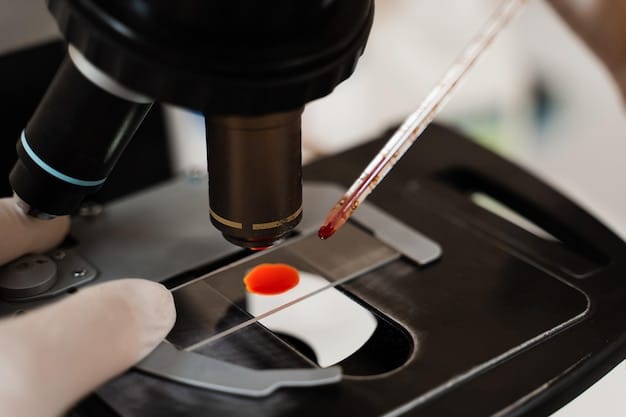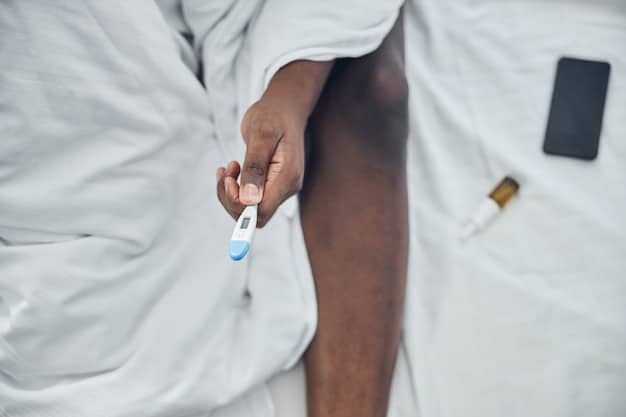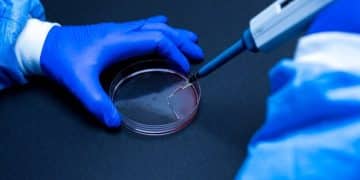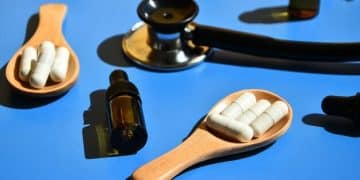Semen Analysis Results: The Complete Guide to Understanding Your Fertility

A semen analysis is a crucial test for evaluating male fertility, assessing sperm count, motility, morphology, and other vital parameters that can impact a couple’s ability to conceive.
Navigating the world of fertility can be overwhelming, especially when faced with medical jargon and complex test results. If you’re trying to conceive, a semen analysis is often one of the first steps in evaluating male fertility. This complete guide to understanding your semen analysis results will break down the key components of the test, what the numbers mean, and what steps you can take to improve your chances of starting a family.
What is a Semen Analysis?
A semen analysis, also known as a sperm test, is a laboratory test that evaluates the quality and quantity of a man’s semen and sperm. It is a vital tool in assessing male fertility and can help identify potential issues that may be affecting a couple’s ability to conceive.
The test measures various parameters, including sperm count, motility (movement), morphology (shape), and other factors that contribute to sperm’s ability to fertilize an egg. Understanding these parameters is crucial for interpreting the results and determining the next steps in your fertility journey.
Why is Semen Analysis Important?
Semen analysis plays a critical role in diagnosing male infertility. It helps identify abnormalities that may be preventing sperm from reaching and fertilizing an egg. By assessing sperm health, doctors can recommend appropriate treatments, such as lifestyle changes, medication, or assisted reproductive technologies (ART).
- Diagnosis: Identifies potential causes of male infertility.
- Treatment Planning: Guides the selection of appropriate fertility treatments.
- Monitoring: Tracks the effectiveness of fertility interventions.
How to Prepare for a Semen Analysis
Proper preparation is essential for accurate semen analysis results. Following these guidelines can help ensure the reliability of the test:
- Abstinence: Avoid sexual activity or ejaculation for 2-7 days before the test.
- Health: Inform your doctor about any medications or supplements you are taking.
- Lifestyle: Maintain a healthy lifestyle and avoid excessive alcohol consumption and smoking.

In conclusion, a semen analysis is a fundamental step in evaluating male fertility. Understanding the purpose of the test and how to prepare for it can lead to more accurate results and better-informed decisions about your fertility journey.
Key Parameters Evaluated in a Semen Analysis
A semen analysis assesses various parameters vital for determining male fertility. These parameters provide insights into the quality and quantity of sperm, helping doctors identify potential issues.
The key parameters include sperm count, motility, morphology, volume, pH, and white blood cell count. Each parameter plays a unique role in sperm’s ability to fertilize an egg.
Sperm Count
Sperm count, or sperm concentration, refers to the number of sperm present in a milliliter of semen. According to the World Health Organization (WHO), a normal sperm count is at least 15 million sperm per milliliter.
A low sperm count (oligospermia) can reduce the chances of natural conception, while a complete absence of sperm (azoospermia) can be a significant cause of infertility.
- Normal Sperm Count: ≥ 15 million/mL
- Oligospermia: Low sperm count
- Azoospermia: Absence of sperm
Sperm Motility
Sperm motility refers to the ability of sperm to move effectively. Motility is crucial for sperm to travel through the female reproductive tract to reach and fertilize the egg.
Motility is typically assessed as progressive motility (sperm moving forward in a straight line) and non-progressive motility (sperm moving but not effectively advancing). A normal motility rate is at least 40% total motility or 32% progressive motility.
Sperm Morphology
Sperm morphology refers to the shape and structure of sperm. Normal sperm morphology is essential for successful fertilization, as abnormal sperm may have difficulty penetrating the egg.
Morphology is assessed using strict criteria (Kruger criteria), and a normal sample should have at least 4% of sperm with normal morphology.

In summary, the key parameters evaluated in a semen analysis provide a comprehensive assessment of sperm health. Sperm count, motility, and morphology are critical factors that contribute to male fertility and can help guide appropriate treatment decisions.
Understanding Normal vs. Abnormal Semen Analysis Results
Interpreting semen analysis results requires a clear understanding of what constitutes normal and abnormal values. These results provide valuable insights into a man’s fertility potential.
Understanding the normal ranges for each parameter and recognizing potential abnormalities is essential for identifying potential issues and planning appropriate interventions.
Normal Semen Analysis Values
The World Health Organization (WHO) has established reference values for semen analysis parameters. These values serve as a benchmark for assessing sperm health.
- Volume: 1.5 mL or more
- pH: 7.2-8.0
- Total Sperm Number: 39 million or more per ejaculate
Common Sperm Abnormalities
Several abnormalities can be identified through semen analysis. These abnormalities may affect sperm count, motility, morphology, or other parameters.
Conditions like oligospermia (low sperm count), asthenospermia (poor sperm motility), and teratospermia (abnormal sperm morphology) can significantly impact fertility.
Factors that can lead to sperm abnormalities include:
- Infections: Infections in the reproductive tract can affect sperm production and quality.
- Hormonal Imbalances: Hormonal issues can disrupt sperm development.
- Lifestyle Factors: Smoking, excessive alcohol consumption, and obesity can negatively impact sperm health.
Interpreting Your Semen Analysis Report
When reviewing your semen analysis report, it’s crucial to consult with a healthcare professional who can provide personalized guidance. They can explain the results in detail and recommend further evaluations or treatments if needed.
A comprehensive approach, including lifestyle modifications, medical interventions, or assisted reproductive technologies (ART), may be necessary to address sperm abnormalities and improve fertility.
Factors That Can Affect Semen Analysis Results
Various factors can influence semen analysis results, making it essential to consider these variables when interpreting the findings. Lifestyle, health conditions, and environmental exposures can all play a role.
Understanding these factors can help ensure the accuracy and reliability of semen analysis results, leading to more informed decisions about fertility treatment.
Lifestyle Factors
Lifestyle choices can significantly impact sperm health and semen analysis results. Adopting healthy habits can improve sperm quality and fertility potential.
- Smoking: Smoking has been linked to decreased sperm count, motility, and morphology.
- Alcohol: Excessive alcohol consumption can negatively affect sperm production.
- Diet: A balanced diet rich in antioxidants, vitamins, and minerals is essential for sperm health.
Health Conditions and Medications
Certain health conditions and medications can affect sperm production and quality. It’s crucial to inform your doctor about any medical issues or medications you are taking.
Conditions like varicocele (enlarged veins in the scrotum), infections, hormonal imbalances, and genetic disorders can all impact sperm health.
Medications such as anabolic steroids, chemotherapy drugs, and certain antibiotics can also have detrimental effects on sperm production.
Environmental Exposures
Exposure to environmental toxins and pollutants can negatively impact sperm health. Minimizing exposure to these substances can help protect sperm quality.
Environmental factors that can affect sperm include:
- Heat: Exposure to high temperatures (e.g., hot tubs, saunas) can impair sperm production.
- Toxins: Exposure to pesticides, heavy metals, and industrial chemicals can damage sperm.
- Radiation: Exposure to radiation can affect sperm DNA and overall sperm quality.
Improving Semen Quality: Lifestyle and Medical Interventions
If your semen analysis results indicate abnormalities, there are several steps you can take to improve semen quality. Lifestyle changes and medical interventions can help enhance sperm health and fertility potential.
Adopting healthy habits, addressing underlying medical conditions, and exploring medical treatments can significantly improve your chances of conceiving.
Lifestyle Changes
Making positive lifestyle changes is often the first step in improving semen quality. These changes can have a significant impact on sperm health.
- Quit Smoking: Eliminating tobacco use is crucial for improving sperm count, motility, and morphology.
- Limit Alcohol: Reducing or eliminating alcohol consumption can enhance sperm production.
- Healthy Diet: Consuming a balanced diet rich in fruits, vegetables, and lean proteins provides essential nutrients for sperm health.
Medical Interventions
In some cases, medical interventions may be necessary to address underlying conditions affecting semen quality. These interventions can include:
Medical treatments may be useful such as:
- Medications: Hormonal imbalances can be corrected with medications to stimulate sperm production.
- Surgery: Varicocele repair can improve sperm count and motility.
- Assisted Reproductive Technologies (ART): Procedures like intrauterine insemination (IUI) and in vitro fertilization (IVF) can help couples conceive when sperm quality is compromised.
Supplements and Natural Remedies
Certain supplements and natural remedies may help improve semen quality. However, it’s essential to consult with a healthcare professional before starting any new supplements.
Supplements and remedies include:
- Antioxidants: CoQ10, vitamin C, and vitamin E can protect sperm from oxidative damage.
- Amino Acids: L-carnitine and L-arginine may improve sperm motility and count.
- Herbal Remedies: Some herbal remedies, such as ginseng and Tribulus terrestris, are believed to enhance sperm health.
The Role of Semen Analysis in Assisted Reproductive Technologies (ART)
Semen analysis plays a crucial role in assisted reproductive technologies (ART), such as in vitro fertilization (IVF) and intrauterine insemination (IUI). The results of semen analysis help determine the most appropriate ART technique and optimize the chances of successful conception.
Understanding the role of semen analysis in ART can help couples make informed decisions about their fertility treatment options.
Semen Analysis and IUI
Intrauterine insemination (IUI) involves placing sperm directly into the woman’s uterus, bypassing the cervix and shortening the distance sperm need to travel to reach the egg.
Semen analysis helps determine if IUI is a viable option and identify any sperm abnormalities that may need to be addressed. Parameters such as sperm count and motility are critical for IUI success.
Semen Analysis and IVF
In vitro fertilization (IVF) involves fertilizing eggs with sperm in a laboratory setting and then transferring the resulting embryos into the woman’s uterus.
Semen analysis helps determine the sperm preparation techniques needed for IVF, such as sperm washing and selection. ICSI (intracytoplasmic sperm injection), a technique where a single sperm is injected directly into an egg, may be used if sperm quality is poor.
Advanced Sperm Selection Techniques
Advanced sperm selection techniques can improve the chances of successful fertilization in ART procedures. These techniques help identify and select the healthiest and most viable sperm for use in IVF or ICSI.
Techniques include:
- IMSI (Intracytoplasmic Morphologically Selected Sperm Injection): A high-magnification technique that allows for more detailed evaluation of sperm morphology.
- PICSI (Physiologic Intracytoplasmic Sperm Injection): Selects sperm based on their ability to bind to hyaluronic acid, indicating maturity and DNA integrity.
| Key Point | Brief Description |
|---|---|
| 🔬 Sperm Count | Number of sperm in semen, crucial for fertilization. |
| 🏃 Sperm Motility | Sperm’s ability to move efficiently towards the egg. |
| 🧬 Sperm Morphology | Shape and structure of sperm, impacting fertilization. |
| 🌱 Lifestyle | Healthy habits improve overall semen quality. |
Frequently Asked Questions (FAQ)
▼
It’s recommended to abstain from sexual activity or ejaculation for 2-7 days before providing a semen sample. This period ensures an adequate sperm count and accurate results.
▼
Yes, stress can impact hormone levels and sperm production, potentially affecting semen analysis results. Try to minimize stress and maintain a healthy lifestyle before the test.
▼
Abnormal sperm morphology (teratospermia) means that a higher percentage of sperm have an irregular shape. This can affect their ability to fertilize an egg, but treatments are available.
▼
Yes, a diet rich in antioxidants, vitamins, and minerals can promote sperm health. Include fruits, vegetables, lean proteins, and healthy fats in your diet to support fertility.
▼
Your doctor will advise on the frequency of semen analysis based on your specific circumstances. Typically, repeat tests are done 2-3 months apart to account for sperm production cycles.
Conclusion
Understanding your semen analysis results is a crucial step in assessing and addressing male fertility. By familiarizing yourself with the key parameters, potential abnormalities, and available interventions, you can take proactive steps toward improving your chances of starting a family. Consult with a healthcare professional for personalized guidance and support throughout your fertility journey.





